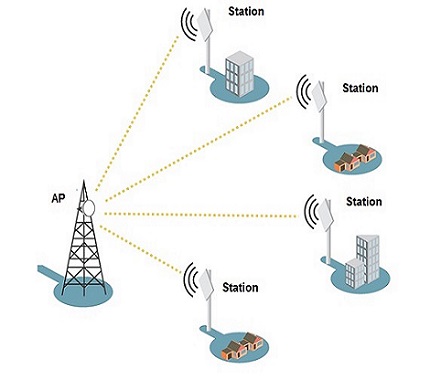
Point-to-Multipoint Wireless

The Point-to-Multipoint topology (also called star topology or simply P2MP) is a common network
architecture for outdoor wireless networks to connect multiple locations to one single central location.
In a point-to-multipoint wireless Ethernet network, all remote locations do not communicate directly
with each other but have a single connection towards the center of the star network where one or more
base station is typically located.
Outdoor point-to-multipoint wireless solutions are very common both for wireless Internet service providers
(WISPs) and for outdoor video-surveillance systems. In a WISP network, subscribers are connected at the edge
of the network using a client device typically mounted on the roof of their house. One or more central base
stations are mounted on a high building, or on a mountaintop or on a water tower in line of sight with as many
client devices as possible.
Features
- Dedicated bandwidth.
- 99.99% uptime using link failover.
- 24x7x365 Dedicated Helpdesk.
- Enterprises carrier grade connectivity.
- Secure Connectivity for Internet.
- Latency commitment.
- Packet loss less than 1%.
- Multiple last mile options.
- Ring protection (for fibre last mile only).
- Network is also peered with Google.
- Resilience can be developed as part of the solution.
- Industry standard service level agreements for ensuring “always on “services.
